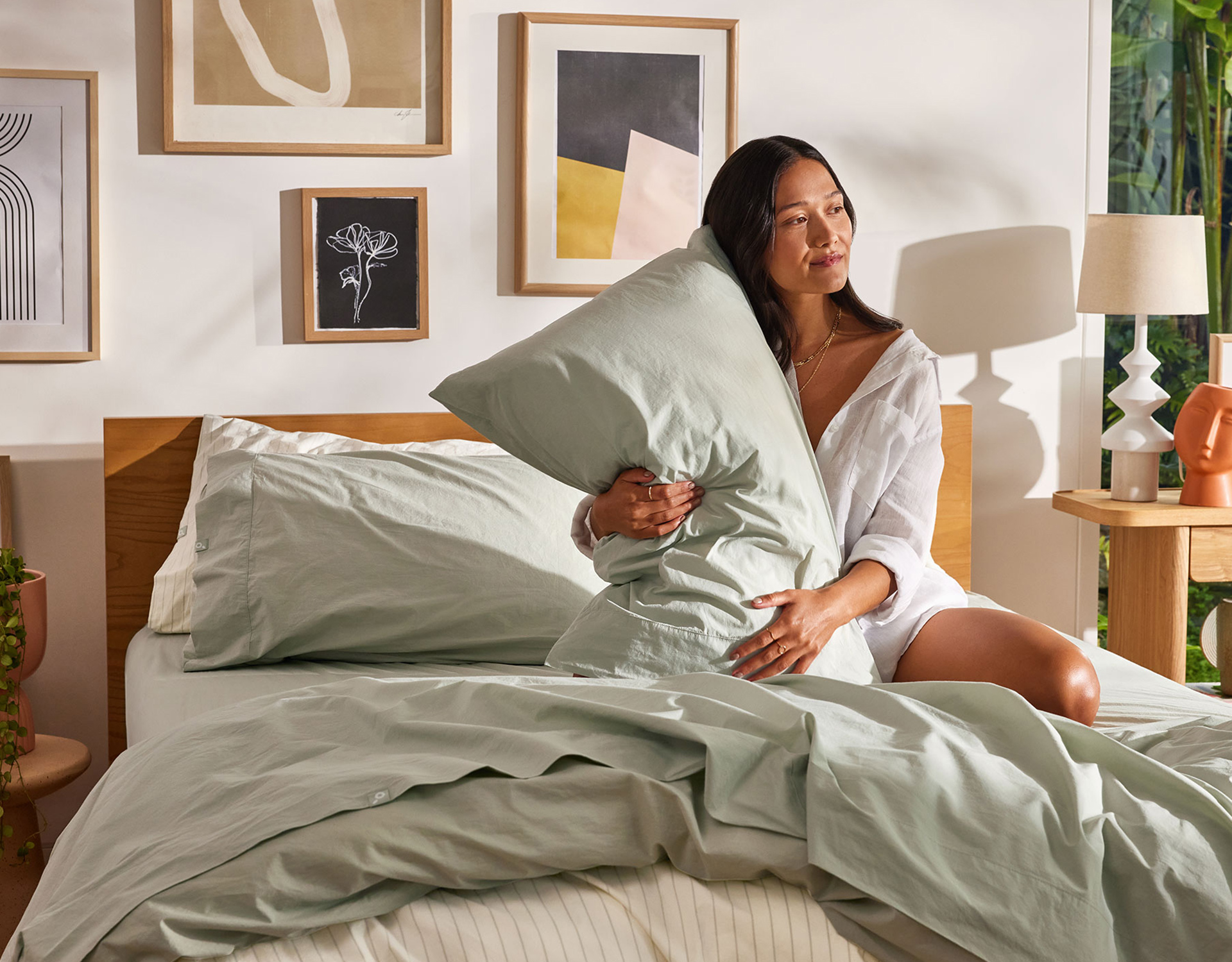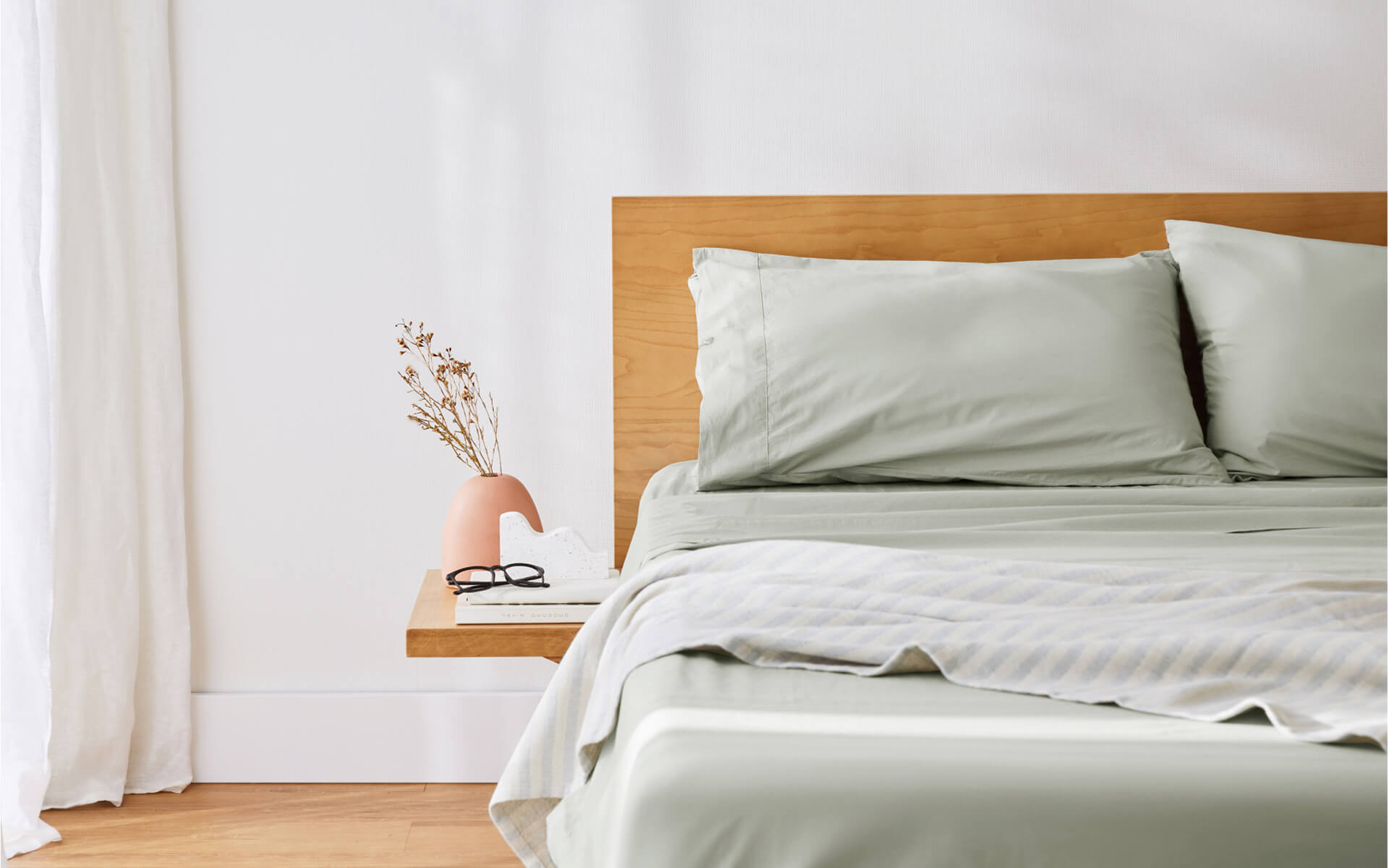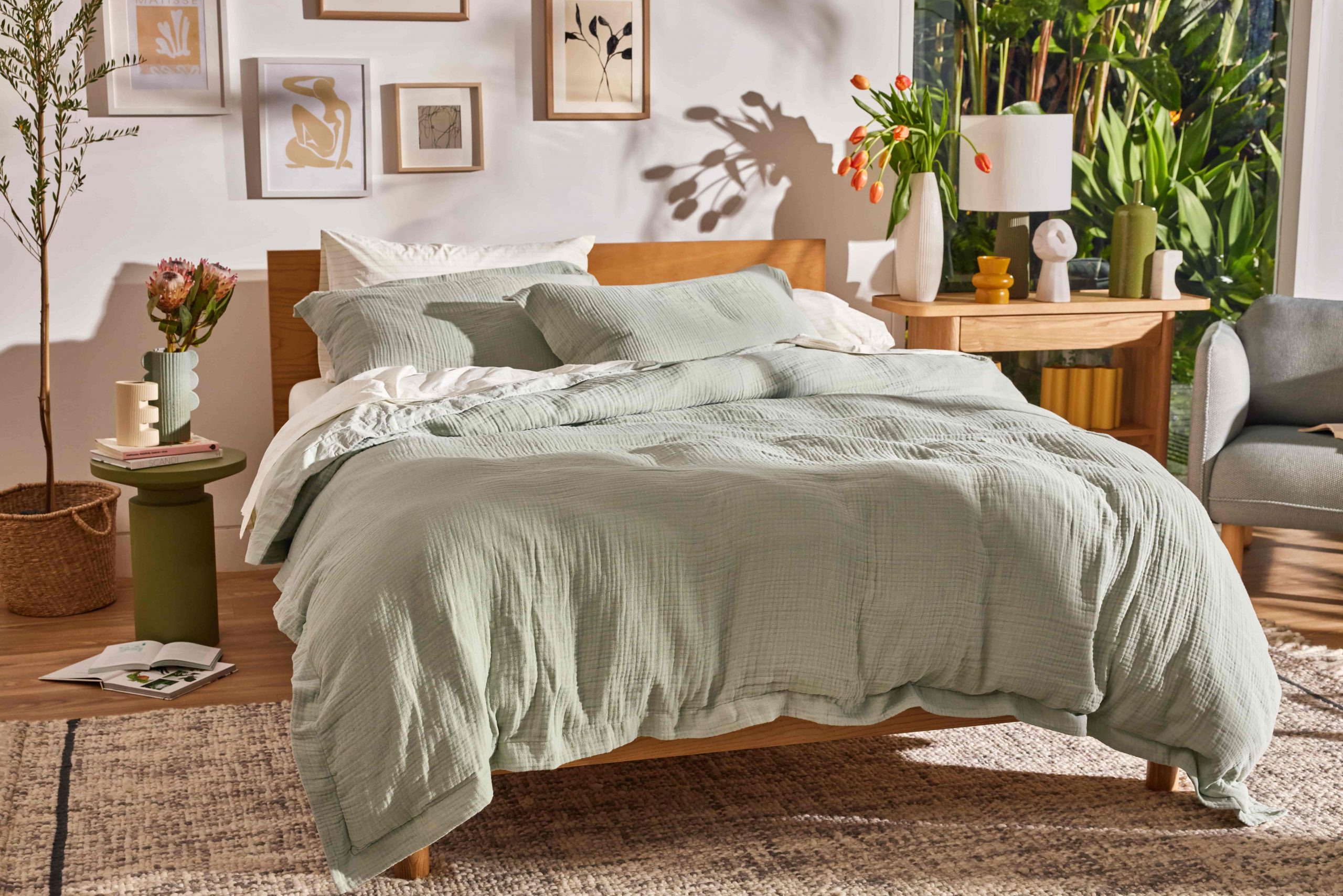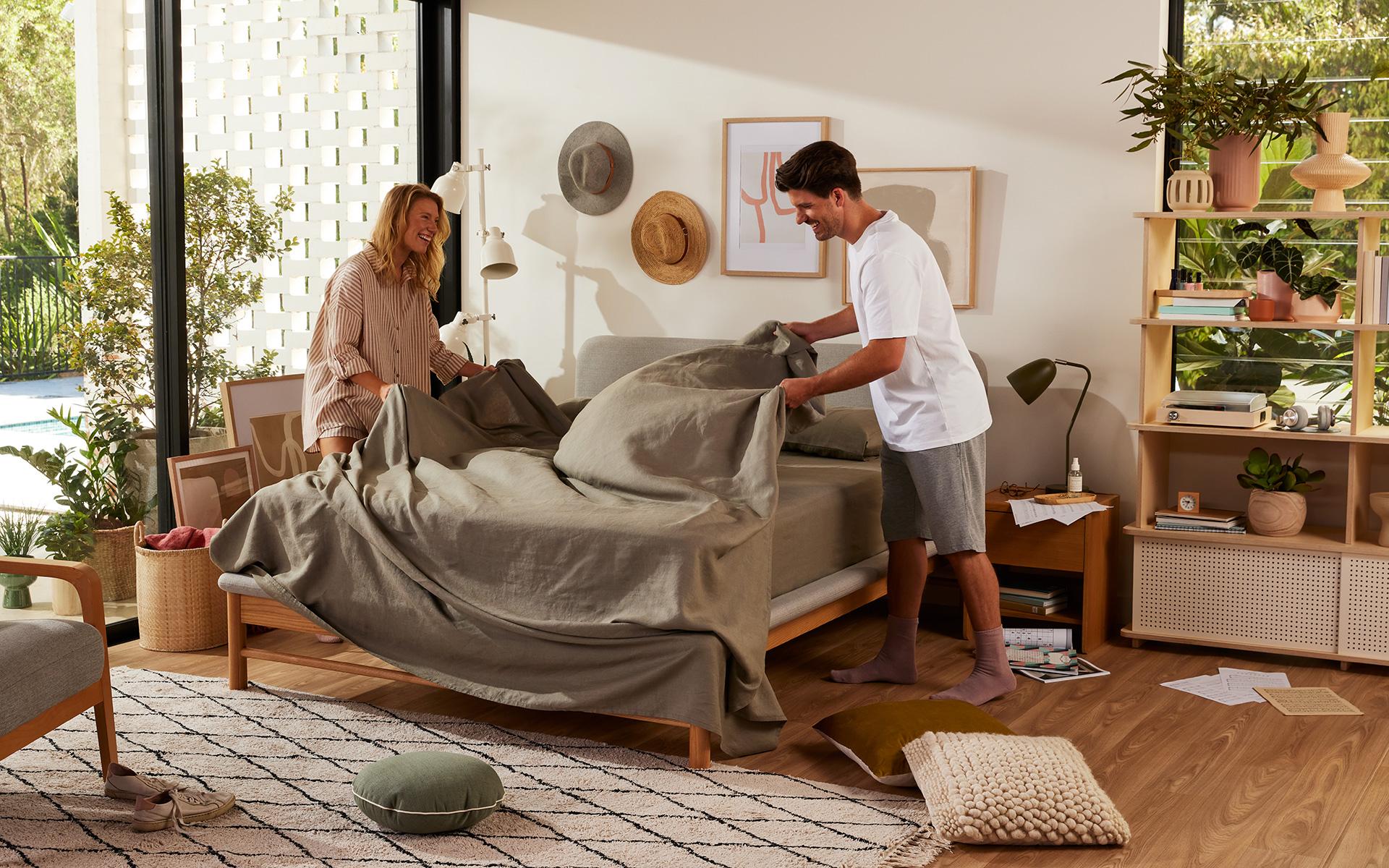When most people see a higher thread count figure on a set of sheets, they think “luxury”. The more the better, right?
Wrong.
Thread count is only one indicator of the quality of your bedding. However because of how it is determined, it can make low quality sheets look top end and vice versa. So we’re pulling the curtain on that elusive figure and revealing what you should be paying attention to instead.
What is thread count and how is it measured?
Thread count refers to the number of threads woven together per 10cm2 of fabric. To calculate the number, both lengthwise threads (warp) and widthwise threads (weft) are counted. For example if 10cm2 of fabric is made from 150 lengthwise threads woven with 150 widthwise threads, the thread count is 300.
The number of threads you can fit into this area depends on the kind of fabric as well as the quality of those threads. For example, good quality sheets can have a thread count of between 80-150 – much lower than cotton – because the individual threads are a lot thicker. With thinner threads such as silk and satin it can be as high as 1,000.
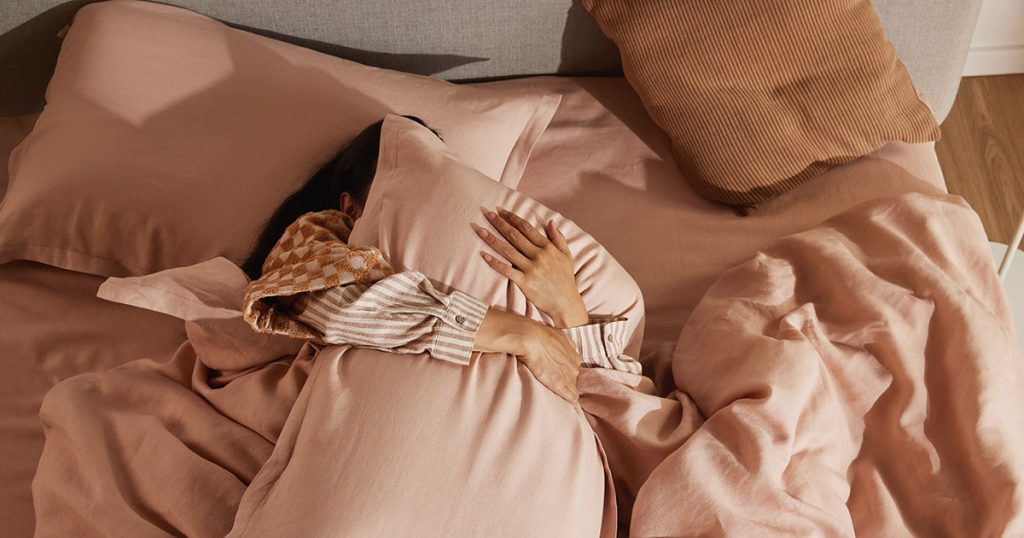
More is not always better
When it comes to cotton sheets, manufacturers can sometimes make a big song and dance about the thread count to make them appear like they’re better quality than they actually are.
So how can manufacturers achieve this high number? By compromising the quality of those threads. Some manufacturers count thinner strands of fabric twisted together or threads of yarn that have been split in two as a way to increase the figure.
As you may have guessed, this approach bumps up the thread count figure without making the fabric any stronger or better quality.
How to determine the quality of your sheets?
If you’re disheartened by this confusion around thread count – don’t be. While you may not know whether that figure is inflated or real, there are other indicators of sheet quality.
If you see terms such as 2-ply or 4-ply, be suspicious. These terms should make you doubt the validity of the number listed as a thread count. The length of the yarn is important. Long or extra-long staple fibres make the sheet softer, stronger and more durable.
The type of weave matters too. Twill weave is one of the three basic types of weave (along with sateen and percale.) While it ultimately comes down to personal choice, twill produces a heavier, more durable fabric that also feels lush and soft against your skin.
Finally, the type of fabric is important so don’t think twice about giving our Organic Cotton, Le Linen or TENCEL™ sheets a try.
